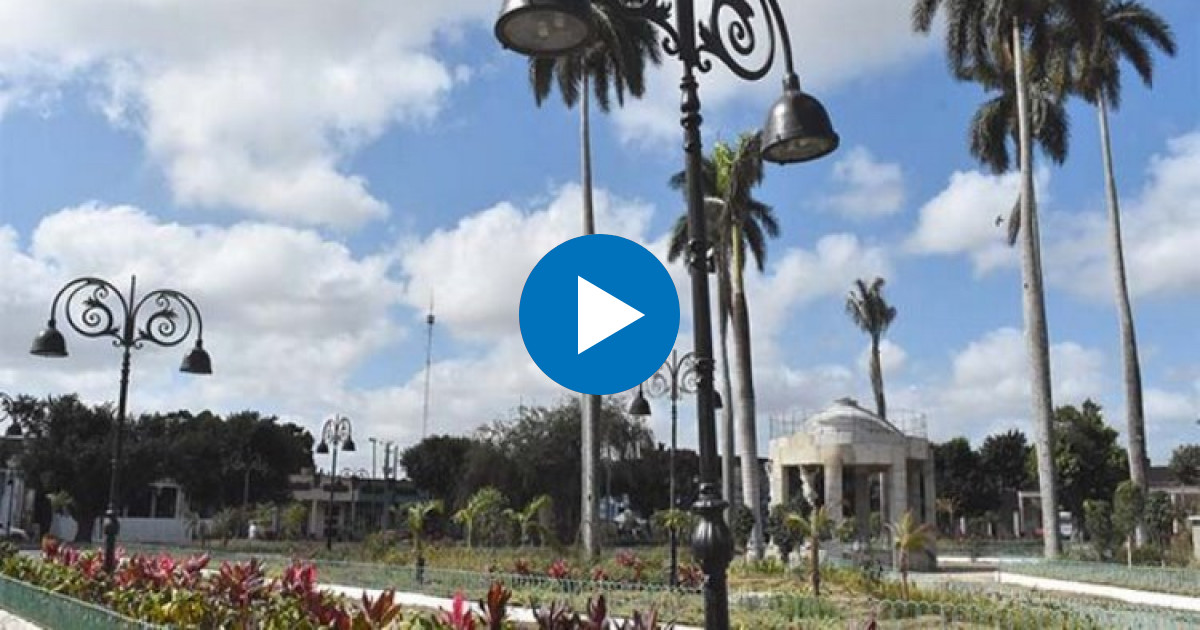
Casallas Park has always been a bit of the façade and a bit of the heart of the beautiful town of Placetas, as it is located on Carretera Central, Avenida Máximo Gómez, between 1st and 2nd of the West. Perhaps for this reason, a restoration has been underway for months, of which the floor is still missing, the roundabout is finished and some other details, according to the Villa Clara newspaper Vanguardia, and the Santa Clara radio station CMHW.
The current Casallas Park was previously the Plaza de Armas, an empty space surrounded by 25 laurel trees planted in 1880. These trees were also planted on both sides of the main streets, especially at the entrance and exit of the town and in other public spaces. That is why Placetas began to be called the Villa de los Laureles.
In 1927, the major renovation works of the park were completed, renamed in honor of the Cuban independence patriot Rafael Casallas Monteagudo, for his bravery and dignified attitude in combat against the Spanish troops. Casallas died in an action where he attacked with his troops in the War of '95.
On May 14, 1950, the obelisk was inaugurated in honor of the mothers at the initiative of the Knights of the Light Order Lodge. However, it must also be said that there were two walks, divided by gardens, in which white people walked on the inside and black people walked on the outside. In 1980, 25 Laurels were planted and the wooden benches were replaced, but despite this the park needed total restoration, which was undertaken recently.
An important part of the historical heritage of the municipality, and the main cultural and recreational center, Casallas Park was the place where Danzón exhibitions, Concerts by the Municipal Music Band and various patriotic events were held, since the marble Obelisk is located in the park. to Colonel Rafael Casallas Monteagudo, the bust of the independence colonel Alberto Rojas Espinosa, the Corner of the Mothers, and the Monument to the Liberation of Placetas.
I must say that my joy at the news of the remodeling of Parque Casallas is due in part to personal reasons since my family's history is linked to that town. My grandparents on my mother's side lived in a remote place, without electricity and with dirt floors, called La Conchita, fifteen or twenty kilometers from Placetas, which was, in any case, the most prosperous and developed nearby town.
My grandfather used to make the very long trip from La Conchita to Placetas to sell agricultural products in the town, and thus, poorly, support his wife and six children. Almost illiterate, but with the soul of a poet, Atilano Fuentes, who was my grandfather's name, conceived around 1949, a few tenths dedicated to Placetas, the Villa de los Laureles, which allude to Casallas Park, and celebrate the beauties of the town.
The décimas were never published, of course, but my mother and my aunt preserved in their octogenarian memory some stanzas that demonstrate what Placetas and its Parque Casallas meant to them:
“Placetas, smiling town/ laurels are your decorations/ and they make your contours proud/ to all the people of Placeta./ But I, with increased determination/ since I met you/ have torn for you/ from my lyre an argument/ contemplating the monument/ of our Apostle Martí.”
Another of the stanzas explicitly alludes to the recognizable park. “They named their park / with the name of Casallas / the one who in tough battles / the Spanish killed / his corpse was dragged / through the streets, and I consider / that in the entire universe / it is not convenient to forget him / because our Placetas has / memory imperishable.
“Placetas has in its history/ that the white zephyr whips/ and in whose park you can see/ eight little palms that are/ the signature remembrance/ of eight patriotic martyrs.”
What do you think?
COMMENTFiled in: